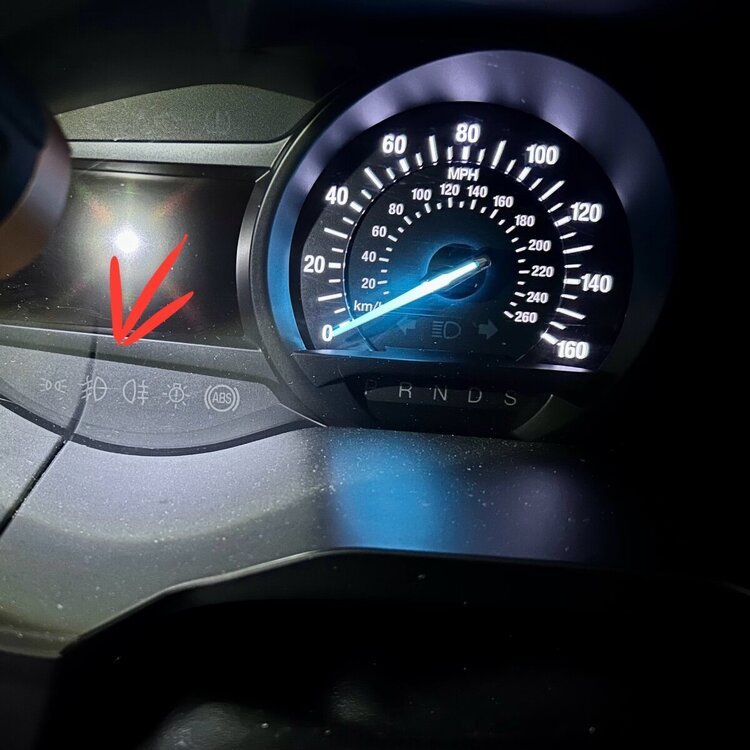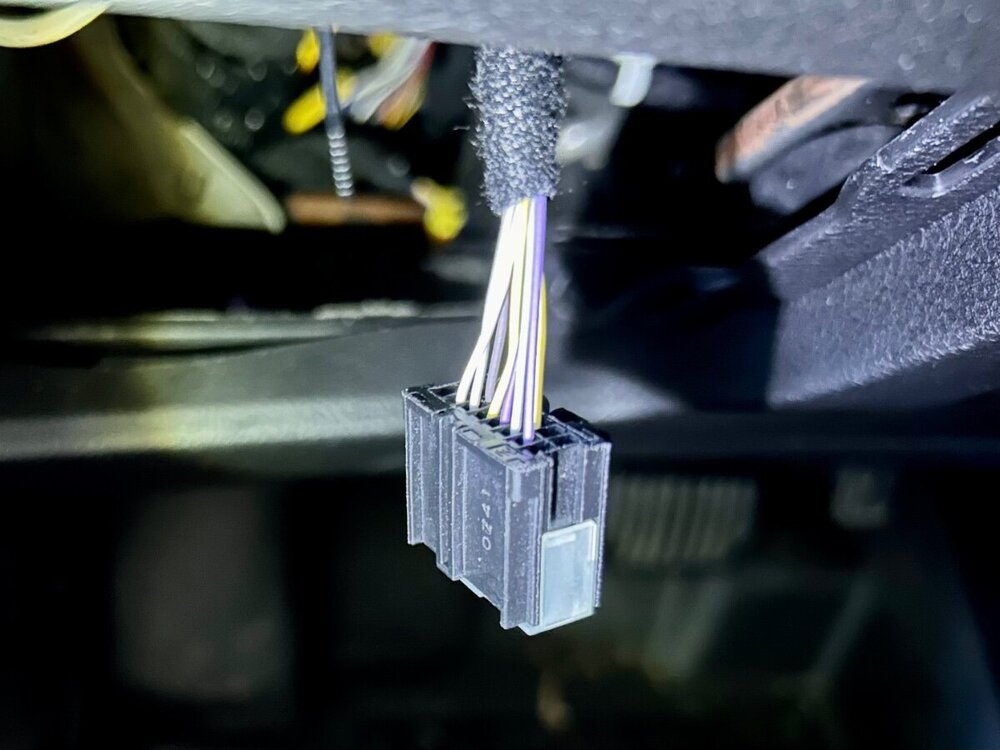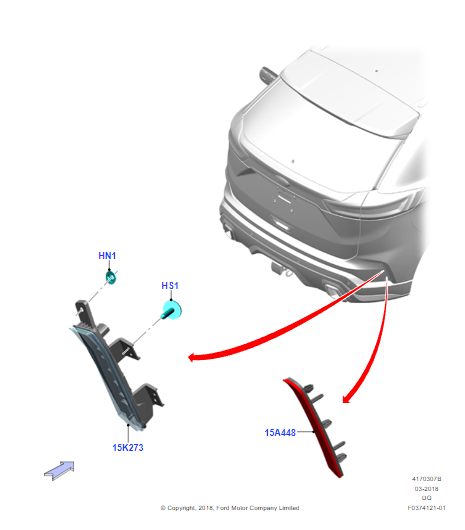-
Posts
609 -
Joined
-
Last visited
-
Days Won
19
Content Type
Profiles
Forums
Gallery
Everything posted by Wubster100
-
The lights look very nice! Lots of detailed photos. Thanks for sharing. It doesn't look like these new lights are able to reflect light, so it doesn't seem legal. I wonder if the original reflectors are able to be modified to fit lights inside of them. It seems impossible to find used ST / Titanium lights without paying a high price. I would love to know if it is possible to physically fit the center tail light from a 2015-2018 Edge.
-

Ambient Lighting Finished! 💡
Wubster100 replied to Wubster100's topic in Accessories & Modifications
The factory illuminated cup holders were not plug and play for my vehicle. I did not have any wiring for ambient lighting from the factory. The cup holders have 2 wires for power, and one wire for “data” or the LIN bus. I had to insert a new wire into the BCM, and run it up to the cup holders. I also had to make changes in FORScan to enable the ambient lighting controls on the touchscreen. -

Problems MS CAN Ford Edge 2022
Wubster100 replied to Jarekmucha's topic in 2019-Current Edge & Nautilius
Are you using a supported FORScan adapter? -

My Ford Touch New Software Release
Wubster100 replied to tjbron's topic in Audio, Backup, Navigation & SYNC
The OTA updates seem to be difficult to get. My 2021 is very behind on SYNC updates. I don’t have full screen CarPlay and a bunch of other features. I think the only way to instantly update the system is to use FDRS. -
I have my halogen turn signals set to be turn signals, but I used FORScan to set the running lights to do the same thing as the DRL. I thought from the factory the turn signal bulbs are only for turn signals and running lights, but I have seen another Edge on the road and the turn signals also functioned as running lights. Did something change with the turn signals throughout 2019-2024? From the factory my turn signals never operated as running lights.
-
FORScan for Windows ($free) Vgate vLinker FS ($35)
-
@HazDo you have more information on this for 2019-2024? Can the ECU be separated?
-
I don’t have any paddle shifters. If I use sport mode, there is engine breaking.
-

2015-2024 Camera Washer
Wubster100 replied to Wubster100's topic in Glass, Lenses, Lighting, Mirrors, Sunroof (BAMR), Wipers
They love to remove everything. I love having a keypad on my vehicle, it gets used almost every day when my passenger arrives at the vehicle before I do, they do not need to stand around and wait for me to unlock the car. If you have a Ford with the keypad deleted, you can buy one, but they look bulky, and I wonder how long it will take before the keypad falls off. Once I saw one mounted to the tailgate. At least the 2024 Broco Sport, 2024 Escape, and 2025 Explorer have an option for a hardwired keypad, but it is almost $200 USD, before installation and programing. -

2015-2024 Camera Washer
Wubster100 replied to Wubster100's topic in Glass, Lenses, Lighting, Mirrors, Sunroof (BAMR), Wipers
The owner's manuals are such a mess these days. One example can be seen in the F-150 lightning owner's manual, where it mentions a remote park adjust feature, yet that doesn't exist. -

2015-2024 Camera Washer
Wubster100 replied to Wubster100's topic in Glass, Lenses, Lighting, Mirrors, Sunroof (BAMR), Wipers
Rear Window Washer When the rear window washer switch is activated, the SCCM sends the request to the driver side windshield wiper motor assembly through the LIN. The driver side windshield wiper motor assembly energizes the rear washer relay (located in the BJB) and activates the rear window wiper motor. When the driver side windshield wiper motor assembly activates the rear window wash relay, voltage is provided to the washer pump, directing washer fluid to the rear window. When the switch is released, the rear window wiper motor continues to operate for 3 additional wipes and then turns off. -
I have a 2021 Edge SEL, and I only have a reverse camera. I was able to use the camera washer for the first time today by pressing the camera button to show the rear camera, then used the lever to clean the rear window. Washer fluid also came out of thee camera washer. My question is that is it necessary to be viewing the camera for it to be cleaned, or will the camera be cleaned any time the rear window washer is activated? Will washer fluid always be pumped to the rear windshield and camera at the same time? Here is what I was able to find: Windshield Washer When the wiper/washer switch is activated, the SCCM sends the washer request to the driver side windshield wiper motor assembly over the LIN. The windshield wash relay is internal to the driver side windshield wiper motor assembly. When the driver side windshield wiper motor assembly activates the internal windshield wash relay, voltage is provided to the washer pump, directing washer fluid to the windshield. If equipped with a front camera, washer solvent is also directed to the front camera lens when the washer pump is active. When the switch is released, the windshield wiper motors will continue to activate for 3 additional wipes and then turn off. Ground for the washer pump is provided through the rear window washer relay located within the BJB.
-
Get back to https://fordescapeforum.com/! 😂 ...Doesn't look like there is too much activity going on over there.
- 7 replies
-
- 1
-

-
- ford escape
- escape not edge
-
(and 1 more)
Tagged with:
-

2022 Edge ST rear fog light
Wubster100 replied to WilkiST's topic in Glass, Lenses, Lighting, Mirrors, Sunroof (BAMR), Wipers
Nevermind on the diagram, it is already posted above. -

2022 Edge ST rear fog light
Wubster100 replied to WilkiST's topic in Glass, Lenses, Lighting, Mirrors, Sunroof (BAMR), Wipers
If you look closely on the IPC, there is a rear fog lamp indicator light. I removed the connector on my headlamps switch, and unfortunately I do not have a communication wire from the BCM to the headlamps switch for rear fog lights. I didn’t bother to check for a power wire from the BCM to the rear of the vehicle for fog lights. @Haz I would like to request the wiring diagram for the headlamps switch that shows where pin 2 on connector C205 connects to the BCM for communication. My understanding is that the switch makes a momentary connection to ground. -

2022 Edge ST rear fog light
Wubster100 replied to WilkiST's topic in Glass, Lenses, Lighting, Mirrors, Sunroof (BAMR), Wipers
I will check out my 2021 SEL BCM to see if I have any wires ran for rear fog lights. -

2022 Edge ST rear fog light
Wubster100 replied to WilkiST's topic in Glass, Lenses, Lighting, Mirrors, Sunroof (BAMR), Wipers
I see that you are going to order a rear fog light to see if it will fit. Have you investigated the headlamp switch yet? Also, if you shine a light on your instrument panel cluster, you should notice that next to your fog lights, there is a rear fog light lamp. -

European rear fog lights
Wubster100 replied to scorpionking0102's topic in Accessories & Modifications
-

European rear fog lights
Wubster100 replied to scorpionking0102's topic in Accessories & Modifications
They probably said that it won't fit because the USA market never had the option for rear fog lights, therefore all Edges from USA market will be incompatible. You may have to compare the physical dimensions of a regular USA rear reflector to a European rear reflector with the fog light to determine if the fog light will fit. -

2022 Edge ST rear fog light
Wubster100 replied to WilkiST's topic in Glass, Lenses, Lighting, Mirrors, Sunroof (BAMR), Wipers
There is some good information on wiring rear fog lights to a Ford Fusion. THe Fusion is similar to the Edge. http://www.2gfusions.net/showthread.php?tid=8347






